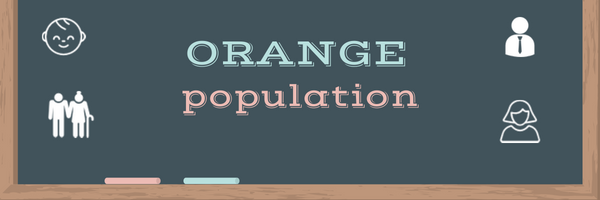
Orange is a New South Wales city located on 254 km west of Sydney. With a population over 39,000, the city is 13th most populous place in NSW. It also ranks 34th largest urban centre by population in Australia.
Based on our research, Orange population will reach 40,744 by the end of June 2023. We use end of June each year due to Australian Bureau of Statistics (ABS) always follow Australian financial year when pushed the data. The calculation is based on the average growth rate of 1.21% over last 12 years since 2011. We believe using the recent years’ figures (see the table in next section) will make the estimation more accurate.
Population Growth of Orange
Looking back last twelve years of Orange’s population, overall the growth rate is very consistent and strong ranging from 0.86% to 1.47%, adding around 300 to 564 people each year to the overall population. If you compare the 2011 and 2016 census figure, the growth rate is 6.25% over 5 years period. The reasons contribute to the population growth is that employment rate and birth rate are very steady in Orange. The growth is pretty much align with the national population growth. The population and growth rate are very similar to neighbor city Dubbo.
| Year | Population | Growth rate |
| 2011 | 34,992 | n/a |
| 2012 | 35,292 | 0.86% |
| 2013 | 35,760 | 1.33% |
| 2014 | 36,120 | 1.01% |
| 2015 | 36,643 | 1.45% |
| 2016 | 37,182 | 1.47% |
| 2017 | 37,580 | 1.07% |
| 2018 | 38,029 | 1.19% |
| 2019 | 38,484 | 1.20% |
| 2020 | 38,820 | 1.16% |
| 2021 | 39,256 | 1.12% |
| 2022 | 39,820 | 1.44% |
| 2023 | 40,270 | 1.13% |
Demographics of Orange
According to census, 48.3 percent of people living in Orange are male, while 51.7% are female. Average age in Orange is 36. The top countries of birth are: Australia 83.2%, India 1.0%, New Zealand 0.9%, Philippines 0.5% and China (excludes SARs and Taiwan) 0.4%. The top spoken languages at home are: English 87.3%, Malayalam 0.7%, Mandarin 0.4%, Italian 0.3%, Nepali 0.3% and Cantonese 0.2%.
The religious groups in Orange consist of:
Catholic 30.1%, No Religion, so described 22.0%, Anglican 20.2%, not stated 8.5% and Uniting Church 6.2%. In Orange, Christianity was the largest religious group reported overall (73.3%).
Population Density of Orange
Orange population density is 120 people per square kilometer.
Occupations and Industries
According to census, the main occupations of people living in Orange are Professionals 20.9%, Technicians and Trades Workers 14.7%, Clerical and Administrative Workers 13.0%, Community and Personal Service Workers 11.9%, and Labourers 10.9%.
The main industries people from Orange work in are 6.2% worked in Hospitals (except Psychiatric Hospitals). Other major industries of employment included Gold Ore Mining 4.2%, State Government Administration 3.4%, Other Social Assistance Services 3.2% and Supermarket and Grocery Stores 2.5%.
In terms of working hours, 10.4% worked 1 to 15 hours, 9.1% worked 16 to 24 hours and 44.0% worked 40 hours or more.
Facts About Orange
- The median weekly personal income for people aged 15 years and over in Orange was $656.
- Aboriginal and Torres Strait Islander people made up 6.6% of the population.
- Orange is a well-known fruit growing district, and produces apples, pears, and many stone fruits. It is interesting to know that even the city is called Orange, but oranges are not grown in the area, since its climate is too cool.
- Orange is the birthplace of poets Banjo Paterson and Kenneth Slessor.
- The city is relatively wet for an inland location. The climate has enabled the area to be a major apple and pear producer, and more recently a centre for cool-weather wine production.
- It was named for Prince William of Orange, later William I of the Netherlands.
- Orange is four hours west of Sydney by car. Travellers would take the Great Western Highway to Bathurst and the Mitchell Highway to Orange.
- The postcode of Orange NSW is 2800.
References
The following links provide data for this topic:The following links provide data for this topic:
- Australian Bureau of Statistics: www.abs.gov.au
- New South Wales Government: www.nsw.gov.au
- Orange City Council: www.orange.nsw.gov.au
